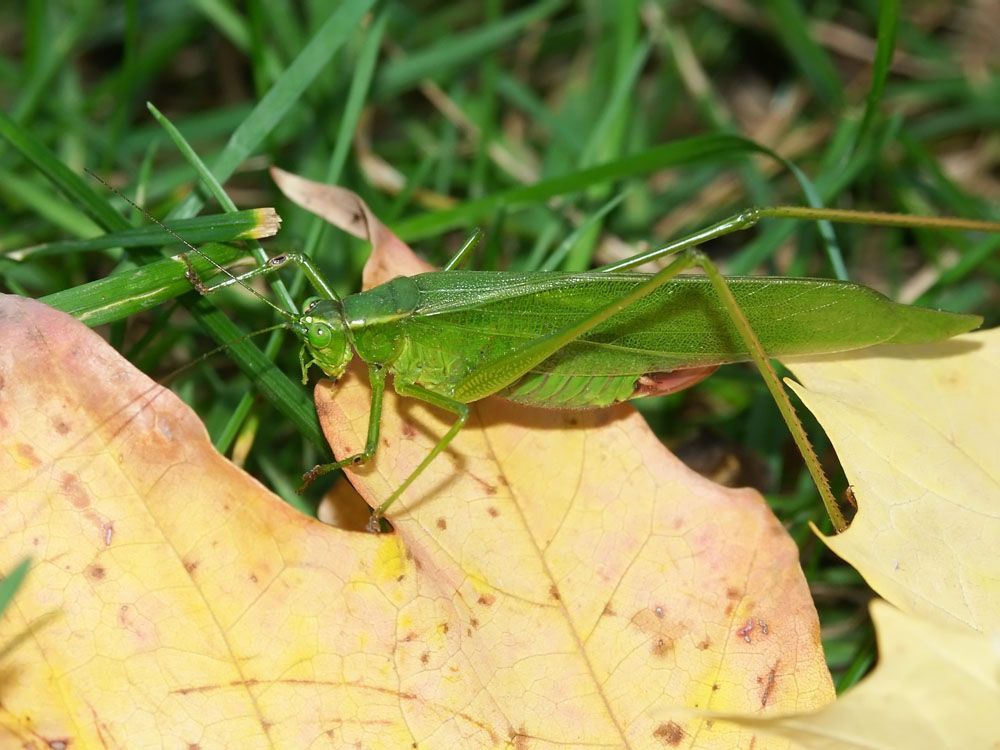
Broadwinged Katydid – Microcentrum rhombifolium
Broadwinged Katydid
Scientific Name: Microcentrum rhombifolium
Common Name: Broadwinged katydid, greater angle-wing katydid
Appearance: Broadwinged katydid belongs to the group of large insects, with sizes up to 2 inches. They have a sharp, angular morphology and are pale green in colour. The legs are thick near the base and become narrow as you reach the hind legs. It also has a pair of thin antennae.
Host Plants or Food: Broadwinged katydid feeds on the foliage of almost kinds of trees and scrubs, especially citrus trees. It can be found in orchards and gardens. Some of them may also eat insects for nutrition.
Territory: Throughout North America, Eastern USA, Western USA
Mode of Damage: They are leaf chewers; however, since they are never found in abundance, the damage is not note-worthy and the plants recover.
Habits and Life History:
Broadwinged katydids are widely found in deciduous forests and orchids with greenery and trees.
The females first roughen the bark of the trees and then glue their eggs to it for overwintering. Due to the scaly appearance of the eggs, the eggs remain protected throughout this period.
The eggs are oval and brown in colour, which helps in camouflaging.
Eggs hatch in the spring, feed throughout the season and grow into an adult as the summer approaches.
The male katydids are capable of producing clicking noises which they use to attract mates.
